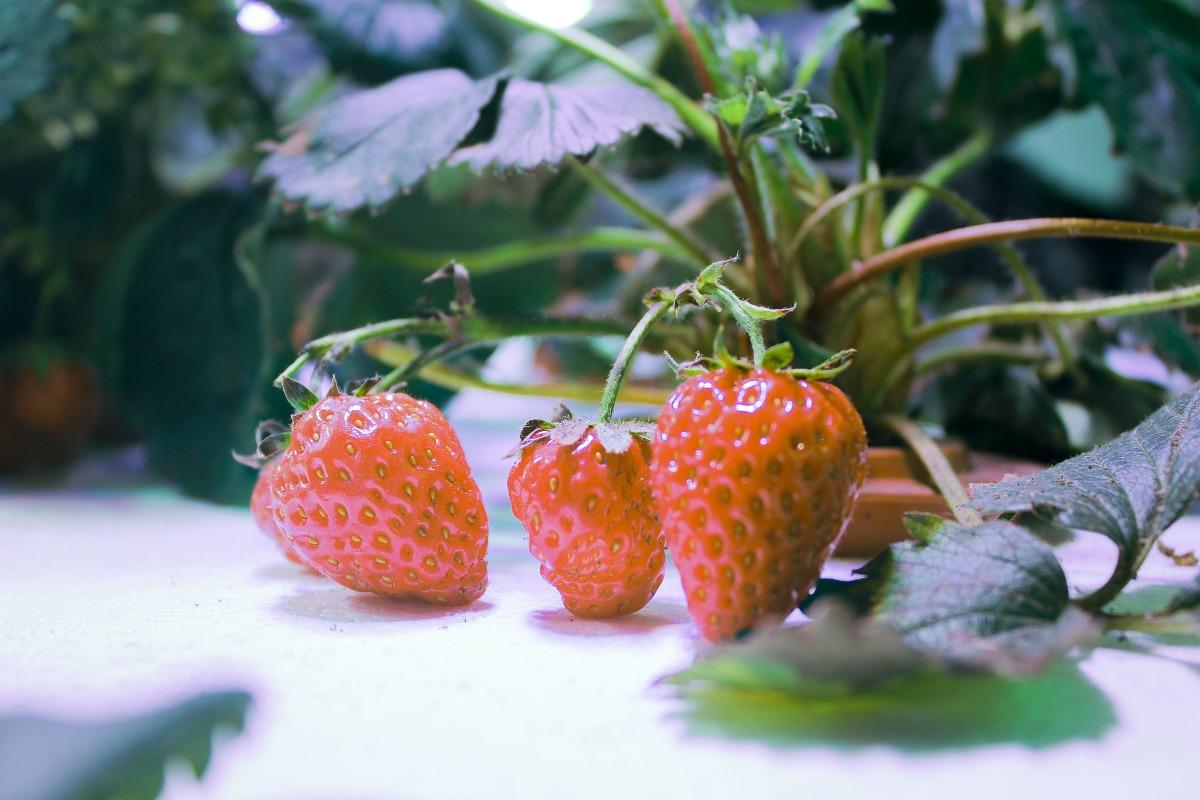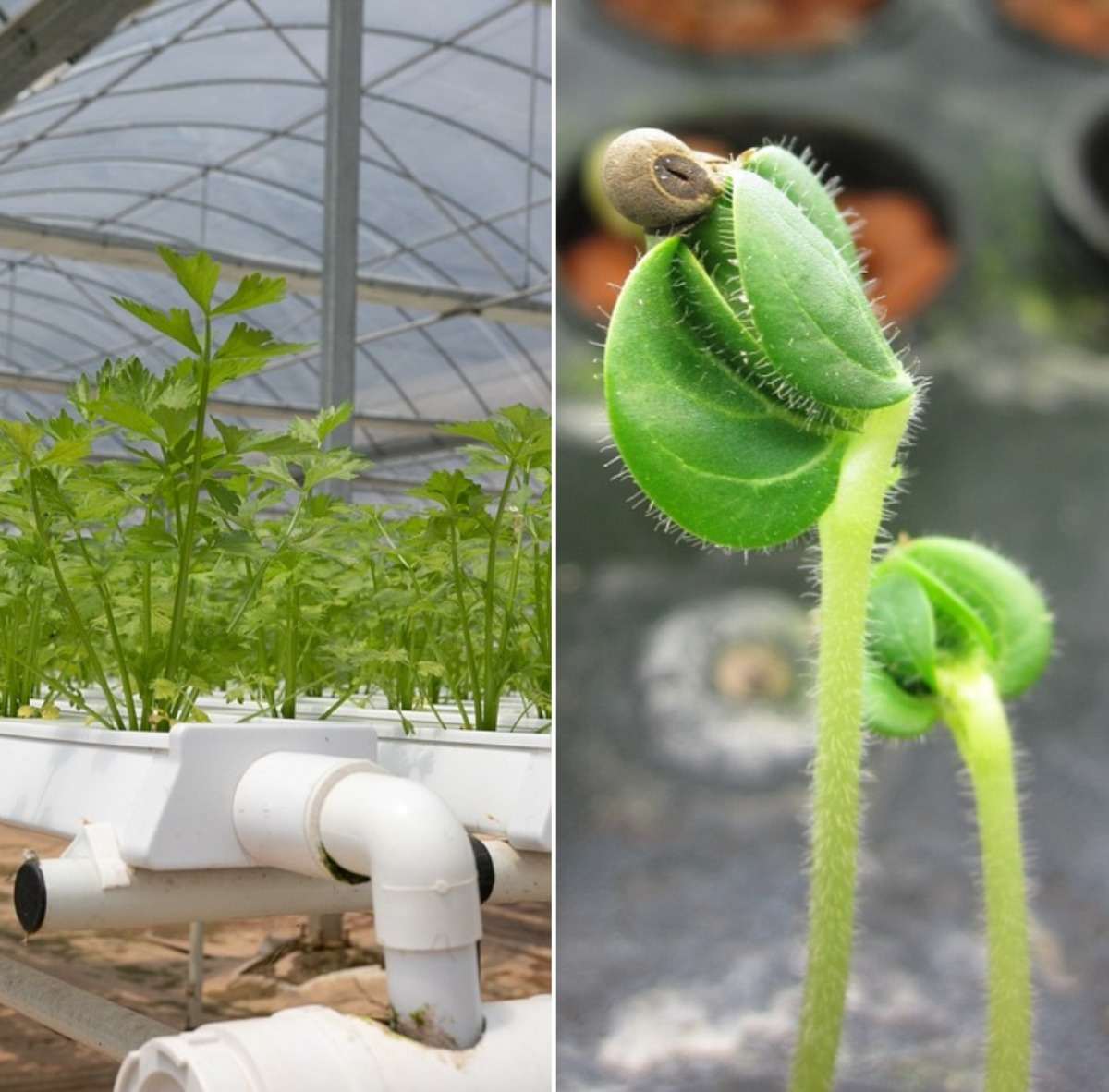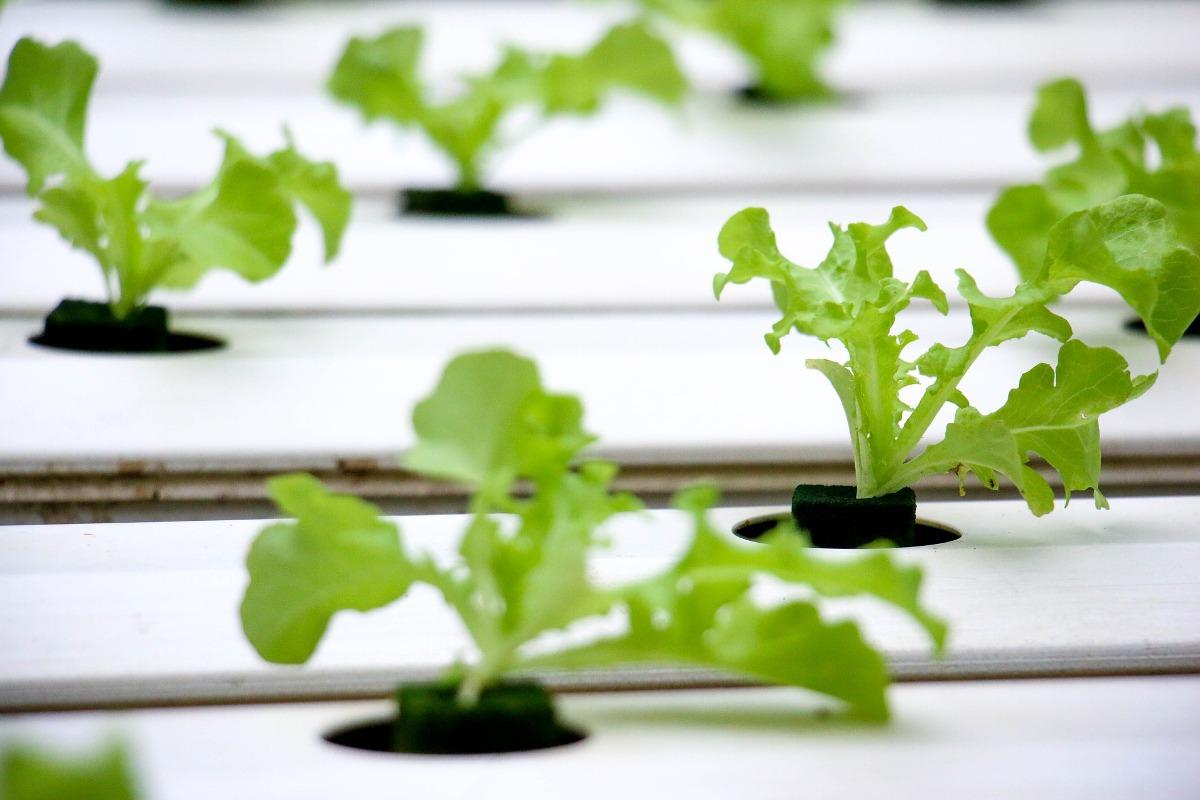Introduction to how to build an NFT hydroponic system: The Nutrient Film Technique (NFT) is quite popular with home hydroponic growers as well. Mainly because of its simple design. NFT systems are commonly used for growing smaller quickly growing plants like different types of lettuce. The major downside to an NFT system is that the plants are sensitive to interruptions in the flow of water from power outages. The plants will begin to wilt quickly any time the water stops flowing through the system. In this article we also discuss below topics;
- How does an NFT system work
- Main components to set up an NFT hydroponic system
- Advantages and disadvantages of NFT hydroponic system
- Tips for growing plants in NFT hydroponic system
- NFT hydroponic system design
- NFT hydroponic nutrients
- The principle behind working of NFT
Now, let us see how to build an NFT hydroponic system on your own.
A step by step guide to build an NFT hydroponic system

Along with growing lettuce, some commercial growers grow different types of herbs and baby greens using or building an NFT hydroponic system. This is a type of hydroponic where there is a continuous and steady flow of nutrients over the tips of plant roots. The system is slightly tilted so the nutrient concentrate can flow by the force of gravity. This way, plant roots can absorb more oxygen from the air than the solution and the technique is effective because plants can absorb more oxygen.
The main principle of the NFT hydroponic system
The principle of the NFT is the principle by which nutrient solutions are recirculated for crop production. The system is widely adjusted for a variety of crop production and ideal for short term crops such as lettuce, leafy crops, and herbs. Larger NFT systems are adaptive for long term crop production for example cucumbers and tomatoes. This makes hydroponics economically attractive and with such outstanding advantages it is ideal for protection of degradation of natural resources this makes the culture efficient to countries.
Nutrient Film Technique system is the growing of plants, waterproof channels, down which flows a shallow stream of re-circulating water, into which are dissolved all the minerals necessary to grow healthy plants. With NFT, plants can be fed with a continuous or intermittent film (using a timer) floating down a trough, PVC pipe, or flood table. The solution travels to the top of a trough through a header line and the solution travels down the bottom of the trough where it collects in the reservoir before it is recirculated. Capillary matting can be located under the trough. Air pumps could be used to aerate the nutrient solution.
You should not miss the Medicinal Plant Contract Farming, Advantages.
NFT system is a versatile and familiar hydroponic system that includes components the same as Ebb and Flow but different in configuration. NFT use a series of shallow troughs. The solution is to run down the length of the trough or gutter in a thin film. This is a common method in greenhouses on a single horizontal plane. It is cheap to build upfront but not very space-efficient.
Components of an NFT hydroponic system
The main components of an NFT system can be given below;
NFT hydroponic nutrients
One of the most essential pieces of equipment that you will have to purchase is a good set of NFT nutrients. One of the best options is 3 part nutrients that have different formulations mainly depending upon the plant’s stage of development. A plant needs different levels of nitrogen, phosphorus, and potassium depending upon whether it is just rooting, in the vegetative stage, or is in the blooming stage of plant development. By giving it just the right amount of NFT nutrients it needs at the right time, you stand to increase your odds of bigger crop yields and healthier plants in general.
The grow tray
To enable all of the nutrient solutions to pass through the roots, growers use slightly downward tubes instead of flat trays. Using tubes or channels make it easy to set the grow tray at an angle. And the channels are made of water-tight materials such as a PVC pipe, plastic film. On the PVC, there are holes to fit the net pots and seedlings.
The main disadvantage of using PVC pipe as your grow tray is that the film will not evenly coat the roots. The roots in the middle would have access to a deeper depth of solution, while those closest to the edges would have a shallow depth. This can cause uneven growth and weakness in plants. By using a flat-bottomed channel, this difficulty is eliminated.
Place seedlings directly into the holes of PVC pipe or for greater stability plant them in net pots and place the net pots in the holes. Most people do not use a growing medium with the NFT system, but let the roots fall directly through the net pots and onto the film. If you select to use a growing medium, use it sparingly and make sure that the roots have plenty of room to fall through the bottom of the pot. Whichever way you select to plant your seedlings, make sure to check and trim the roots to prevent out of control growth that can clog the system.
Another important consideration is the length of the grow tray. As the nutrient solution flows over the roots, and it decreases in nutrient concentration and oxygen levels. And “Short-run” trays offer an advantage over long ones as they ensure that plants at the end of the line receive a nutrient solution with the same composition as those at the beginning of the line. Long channels can be used successfully, make sure that you regularly check the nutrient levels and pH and replenish your solution. If you notice the plants at the end of the line growing slowly or not producing as much, consider switching to a short run system.
Air pump
One of the important elements of a good NFT system is the air pump. Part of your roots will be constantly submerged in water with an NFT, and need a quality air pump to keep oxygen in the water. And if you don’t have enough oxygen in a nutrient solution, then you increase the chances of a plant suffering from root rot, which can harm nutrient uptake significantly. Without an air pump, you will have to use hydrogen peroxide to keep the nutrient solution full of oxygen. While this can work well, it can kill off any organic material that you might have in your nutrient solution. If you plan on using any bacterial based hydroponic supplements along with your NFT nutrients, a quality air pump might be a better solution.
Water pump
The main element of making an NFT system work is a constant stream of NFT nutrients. If your water pump must break down, your plants will be left without moisture and without any nutrients to grow. And this is why it is imperative to invest in a good water pump. Spending a little bit extra in this area will help make sure that everything goes off smoothly and plants get all of the nutrients that they need to thrive.
The reservoir
The reservoir is located in the grow tray, connected to the channel by a pump on the high end and a drain tube on the low end. You must place an air stone in the reservoir, connected to an air pump outside, to oxygenate the water. Unlike other systems, the NFT system does not use an automatic timer connected to the water pump because the pump runs constantly. This can be a problem in the case of power outages, blockages, or system failures so make sure to check the pump and fill the tube regularly and have a backup ready.
In case if you miss this: Custard Apple Seed Germination.
The reservoir joins the grow tray by a nutrient pump on the high end and the nutrient return pipe on the low end. Inside the reservoir, there is an air stone attached to an air pump outside to oxygenate the water. The reservoir is used to contain the nutrient solution since the NFT is a recirculating one. The size of the reservoir depends on the number of plants that you want to grow. If you want to grow a system of 40 to 50 plants, you need a reservoir with a minimum 5-gallon capacity. The NFT doesn’t use an automatic timer connected to the water pump like other hydroponic systems so the water pump runs constantly. This can cause a problem in case of power shortages; system failures so make sure to check the pump, fill the tube regularly, and have a backup ready. A good grow tray and reservoir which will be used to hold the NFT system nutrients can be purchased at any hydroponics equipment store, but they can vary in quality.
What you need to build an NFT hydroponic system
- Container to hold the nutrient solution (a reservoir)
- A submersible fountain or pond pump
- Tubing to distribute water from the pump to the NFT system growing tubes
- Growing tubes for the plants to grow in (also called a gully or channel) starter cubes, or small baskets and growing media to start seedlings in
- Return system (tubing, channels) to guide the used nutrient solution back to the reservoir
Hydroponic NFT system operation is fairly simple. The nutrient solution is pumped up from the reservoir, generally to a manifold that connects the larger tubing to several smaller ones. Each one of these smaller tubes runs nutrient solution to one side of each one of the growing channels or gullies with the plants in it. A thin layer or film of the nutrient solution flows through each of the channels with the plants in it to the other side, passing by each plant and wetting the plant roots on the bottom of the channel as it does. The nutrient solution flows from one side to the other because the channel is sloped slightly thus the water flows downhill.
The roots of the seedlings hang down to the bottom of the tube or channel where they get nutrients from the shallow film of nutrient solution flowing by. The excess nutrient solution flowing out of the low end of each of the channels drains into another channel and guided back to the reservoir where it is recirculated through the system again. The nutrient solution flowing through the channels is shallow, the entire plant’s root mass remains moist from the roots being able to wick up moisture on the outside of the roots, as well as through humidity that’s kept within the tube.
Starting seedlings for NFT hydroponic channels
Hydroponic plants are started in cubes and then transplanted into the channels. The cubes can be made of rock wool, coir, peat moss or a type of spun polymer that allows the nutrient film to soak the cube but allow the film to flow past it. To start seedlings the first step is to wet the cubes and run several quarts of water through the cubes. This not only wets them but also cleans out any excess salts in the cubes. And set the cubes in standard seedling flats before placing a seed in the dimple in the center of the cube.

You will find it difficult to set a single seed in the middle of each cube because the seeds are small. For that reason, growers use the pelletized seed even though it costs a little more. Seed about 10% more seeds than you will need to allow for wastage or poor seed germination. Water the cubes with warm water and keep the seedlings damp and keep the temperature in the germinating area around 18 to 23°C Keep the temperature around the seedlings at least 13°C at night and up to 18°C during the day. Moisten the seedlings with either water (no nutrients) or half-strength nutrient solution until the plant roots reach the bottom of the cube in about 10 days to two weeks.
You may also check the Basic Steps of Organic Farming.
Plant your NFT system – When you see roots at the bottom of the cube or when the seedling leaves are around 2 inches long, transplant into NFT channels and fertilize until the plants reach harvestable size. When placing cubes in the channels the slots in the bottom of the cube must run along the channel to help the nutrient film flow easily. Nutrient flow at this time must be about 8 to 10 ounces of solution per minute at a pH level of 5 to 5.8 depending on temperature and time of year.
The cost of hydroponics NFT system
The cost of commercial hydroponics NFT system costs will be approximately Rs 60,000/Piece.
Plants can be grown in NFT channels
NFT channels are mainly used to grow leafy green plants with a short growth period. Bibb and leaf type lettuce is an ideal plant for such a system but you can grow other leafy greens such as spinach, broccoli Raab, and certain herbs. Larger plants such as cabbage that take longer to grow, are heavier and have larger root systems that are not appropriate for an NFT system.
Harvesting your crop in NFT hydroponic system
To harvest the crop in the NFT system, the lettuce and its cube are gently lifted out of the channel. The cube can be disposed of by trimming the plant roots away. You might have to trim away any leaves with brown tips or discoloration. Immediately after harvesting the crop must be cooled, packed, and shipped. Delays are critical to the quality of the product at this stage.
Growing tips for your Nutrient Film Technique hydroponic system

Control your environment – In the NFT system, you should always control your environment to the best of your ability. It is important in NFT systems in particular because your roots are more exposed than other methods. This makes controlling air temperature, humidity, and airflow even more important.
Control your temperature – Your nutrient solution always remain in the 65-68°F range for root health, as well as optimal nutrient absorption and dissolved oxygen (DO) levels.
Decide how to start your plants – How you start your plants determines their future success in the NFT system. It’s common to start in rock wool cubes, and also use Rapid Rooter starter plugs. However decide to start seeds, make sure it will transplant well into NFT channels.
Monitor your pH – For most plants grown hydroponically, a pH range of 5.8 to 6.3 is ideal. It’s easy for large fluctuations to happen if you’re not careful, so monitor often and make sure you’re within this range, lest you face a nutrient lockout. You can do this with a pH test kit or something like the Blue lab pH Pen.
Remember to change your reservoir – About every week it’s a good idea to change the reservoir completely. The larger your tank, the longer you can go without a complete nutrient solution change, but it is better to change more often than wait too long. This ensures a perfectly calibrated system with the right amount of nutrition for growing plants.
Keep light out of your reservoir – Make your life easier by keeping your plant roots in the dark. If light gets through and hits the roots and nutrient solution, you are opening yourself up to algae growth, which is a pain to deal with and affects the growth rate of plants.
Keep your environment clean – Everything around the NFT system should be as clean as the system itself. When you harvest from the NFT system, give it a deep cleaning before you transplant new seedlings in.
Advantages to building an NFT hydroponic system
- Easy to inspect roots for a sign of disease, feed adequacy due to the absence of a medium.
- Low water and nutrient consumption.
- Unlike media-based systems, you can avoid problems related to matters for example supply, disposal, and cost.
- Easy to disinfect plant roots and hardware in comparison with other system types.
- Plant roots can maintain a uniform pH level and conductivity thanks to regular feeding (and associated flushing) that prevents localized salt build-up.
Disadvantages to build an NFT hydroponic system
- Pump failure can result in plant death within a few hours, particularly in hot weather.
- Not suitable for plants with large tap-root systems for example carrots.
- Compared to run-to-waste systems, it is less suitable for saline (salty) waters as the salinity of the recirculating water gradually increases.
- If the flow of nutrient solution stops, the roots will dry out and become stressed quickly.
- In a newly planted system, when exposed to intense sunlight, the NFT channels can heat up faster than the root zone would heat in aggregate or Rockwool. Though, the continuous flow of nutrient solution does have a cooling effect.
The conclusion to build an NFT hydroponic system
NFT hydroponic system has excellent advantages for growing herbs, vegetables, any other small rooted crops. So, what are you waiting for? Try to build an NFT hydroponic system for profitable crops. You may be interested in Onion Seed Germination, Time, Temperature, Process.
i want to start hydroponic in high volume i want to set green house suggest me any manufacture